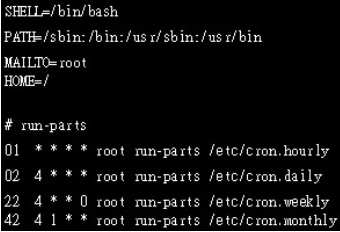ELK beats通用配置说明(12th)
Beats配置文件是以YAML语法,该文件包含用于所有的beats的通用配置选项,以及其特点的选项。下面说说通用的配置,特定的配置要看各自beat文档。 通用的配置如下几部分:
- Shipper
- Output
- Logging(可选)
- Run Options(可选)
Shipper
包含beat配置选项和一些控制其行为的常规设置。
其实每个配置选项的注释说明已经说的很清楚了,有些人就是视而不见。
如下所示:
shipper: # The name of the shipper that publishes the network data. It can be used to group # all the transactions sent by a single shipper in the web interface. # If this options is not defined, the hostname is used. #name: # The tags of the shipper are included in their own field with each # transaction published. Tags make it easy to group servers by different # logical properties. tags: ["service-X", "web-tier"] # Uncomment the following if you want to ignore transactions created # by the server on which the shipper is installed. This option is useful # to remove duplicates if shippers are installed on multiple servers. ignore_outgoing: true # How often (in seconds) shippers are publishing their IPs to the topology map. # The default is 10 seconds. refresh_topology_freq: 10 # Expiration time (in seconds) of the IPs published by a shipper to the topology map. # All the IPs will be deleted afterwards. Note, that the value must be higher than # refresh_topology_freq. The default is 15 seconds. topology_expire: 15 # Configure local GeoIP database support. # If no paths are not configured geoip is disabled. #geoip: #paths: # - "/usr/share/GeoIP/GeoLiteCity.dat" # - "/usr/local/var/GeoIP/GeoLiteCity.dat"
name
beat名称,如果没设置以hostname名自居。该名字包含在每个发布事务的shipper字段。可以以该名字对单个beat发送的所有事务分组。
在启动时,每个beat将发送自己的IP、端口、名字到elasticsearch。这些信息存储在elasticsearch作为网络拓扑图,将每个beat的IP和端口与在这里你所指定的名字映射。
当一个beat接收到一个新的请求和响应称为事务,beat会查询elasticsearch查看网络拓扑是否包含该源服务器IP和端口以及目标服务器。如果该信息可用,在输出的client_server字段被设置成运行在源服务器的beat名称,并且server字段被设置成运行在目标服务器的beat名称。
要在elasticsearch中使用拓扑图的话,必须设置save_topology为TRUE并且elasticsearch为输出。
shipper: name: "ttlsa-shipper"
tags
beat标签列表,包含在每个发布事务的tags字段。标签可用很容易的按照不同的逻辑分组服务器。例如,一个web集群服务器,可以对beat添加上webservers标签,然后在kibana的visualisation界面以该标签过滤和查询整组服务器。
shipper: tags: ["mysql-db", "aws", "rdb"]
ignore_outgoing
如果启用了ignore_outgoing选项,beat将忽略从运行beat服务器上所有事务。不好描述,看下面的解释。
这是非常有用的,当两个beat发布相同的事务。因为一个beat认为是输出队列的事务,另一个beat认为是输入队列的事务。你可以结束这个重复的事务,启用该选项即可。
例如,有下面这个情景,三台服务器每台都安装了一个beat,t1在server1和server2之间交换事务,t2在server2和server3之间交换事务。

默认情况下,每个事务要被索引两次,因为beat2会看到两个事务。当ignore_outgoing为false时,发布的事务是这样的:
- Beat1: t1
- Beat2: t1 and t2
- Beat3: t2
为了避免重复,需要强制beat只发送输入的事务,忽略本地服务器创建的事务。当ignore_outgoing为true时,发布的事务是这样的:
- Beat1: none
- Beat2: t1
- Beat3: t2
refresh_topology_freq
拓扑图刷新的间隔。也就是设置每个beat向拓扑图发布其IP地址的频率。默认是10秒。
topology_expire
拓扑的过期时间。在beat停止发布其IP地址时非常有用。当过期后IP地址将自动的从拓扑图中删除。默认是15秒。
geoip.paths
GeoIP数据库的搜索路径。beat找到GeoIP数据库后加载,然后对每个事务输出client的GeoIP位置。
推荐值为/usr/share/GeoIP/GeoLiteCity.dat 和/usr/local/var/GeoIP/GeoLiteCity.dat。
目前只有Packetbeat使用该选项。
Output
可以配置多个输出来导出相关事务。当前支持的输出类型有:
- Elasticsearch
- Logstash
- Redis (不推荐)
- File
- Console
可以同时启用一个或多个输出。输出插件负责发送JSON格式化的事务数据到下一个管道。同时还维护网络拓扑。
Elasticsearch Output
当指定elasticsearch作为输出,beat通过elasticsearch HTTP API将事务直接发送到elasticsearch。
output: elasticsearch: # The Elasticsearch cluster hosts: ["http://es.ttlsa.com:9200"] # Comment this option if you don't want to store the topology in # Elasticsearch. The default is false. # This option makes sense only for Packetbeat save_topology: true # Optional index name. The default is packetbeat and generates # [packetbeat-]YYYY.MM.DD keys. index: "packetbeat" # List of root certificates for HTTPS server verifications cas: ["/etc/pki/root/ca.pem"] # TLS configuration. tls: # Certificate for TLS client authentication certificate: "/etc/pki/client/cert.pem" # Client Certificate Key certificatekey: "/etc/pki/client/cert.key"
启用SSL,在hosts配置项指定https。
output: elasticsearch: # The Elasticsearch cluster hosts: ["https://localhost:9200"] # Comment this option if you don't want to store the topology in # Elasticsearch. The default is false. # This option makes sense only for Packetbeat save_topology: true # HTTP basic auth username: "admin" password: "s3cr3t"
如果elasticsearch节点通过IP:PORT定义,需要加protocol: https,如下:
output: elasticsearch: # The Elasticsearch cluster hosts: ["localhost"] # Optional http or https. Default is http protocol: "https" # Comment this option if you don't want to store the topology in # Elasticsearch. The default is false. # This option makes sense only for Packetbeat save_topology: true # HTTP basic auth username: "admin" password: "s3cr3t"
hosts
可以指定连接的elasticsearch节点列表。事件将随机分配到这些节点。如果某个节点不可达,事件将自动发送到另一个节点。每个elasticsearch节点定义个格式:URL或者IP:PORT。如http://es1.ttlsa.com,https://es2.ttlsa.com或者10.0.0.1。如果没有指定端口默认是9200。
当以IP:PORT形式定义elasticsearch节点,则schema和path取自protocol和path配置项。如:
output: elasticsearch: # The Elasticsearch cluster hosts: ["10.45.3.2:9220", "10.45.3.1:9230"] # Optional http or https. Default is http protocol: https # HTTP Path at which each Elasticsearch server lives path: /elasticsearch
在上面的例子中,Elasticsearch可用节点是https://10.45.3.2:9220/elasticsearch和https://10.45.3.1:9230/elasticsearch。
worker
配置每台主机发送事件到elasticsearch的worker数量。在负载均衡模式下最好启用。例如,2台主机和3个worker,一共将启动6个worker,每台主机3个worker。
host (不推荐)
elasticsearch服务的主机。该选项不建议使用,已经被hosts替换。
port (不推荐)
elasticsearch服务的端口。该选项不建议使用,已经被hosts替换。
username
连接elasticsearch的基础验证用户名。
password
连接elasticsearch的基础验证密码。
protocol
定义哪种协议可达elasticsearch。选项有http或者https。默认是http。但是,如果在hosts配置项指定了URL,URL中指定的协议将覆盖protocol值。
path
调用HTTP API的前置路径前缀。一般用在elasticsearch监听在HTTP反向代理,同时又自定义API前缀。
index
指定写入事件的索引根名称。默认是beat名称。例如Packetbeat,根索引名称是[packetbeat-]YYYY.MM.DD (如, packetbeat-2015.11.29)。
max_retries
发送到特定logstash的最大尝试次数。如果达到该次数仍不成功,事件将被丢弃。默认是3。
值0表示禁用重试。值小于0将无限重试知道事件已经发布。
如果输出插件把事件丢弃,每个beat要实现必须去顶是否要丢失事件或者尝试再次发送。如果到达max_retries后发送操作还是不成功,beat可选通知。
bulk_max_size
单个elasticsearch批量API索引请求的最大事件数。默认是50。
timeout
elasticsearch请求超时事件。默认90秒。
flush_interval
新事件两个批量API索引请求之间需要等待的秒数。如果bulk_max_size在该值之前到达,额外的批量索引请求生效。
save_topology
elasticsearch是否保持拓扑。默认false。该值只支持Packetbeat。
topology_expire
elasticsearch保存拓扑信息的有效时间。默认15秒。
tls
配置TLS参数选项,如证书颁发机构等,用于基于https的连接。如果tls丢失,主机的CAs用于https连接elasticsearch。
Logstash Output
logstash输出通过使用lumberjack协议将事件直接发送到logstash。要使用此选项,必须在logstash上安装和配置logstash-input-beats插件。logstash允许额外的处理和生成事件路由。
每个发送到logstash事件包含额外的索引和过滤元数据。如:
{ ... "@metadata": { "beat": "<beat>", "type": "<event type>" }}在logstash,你可以配置elasticsearch输出插件使用元数据和事件类型进行索引。
下面的logstash1.5配置文件设置logstash使用beat报告的索引和文档类型将事件索引到elasticsearch。索引使用取决于logstash确定的@timestamp字段。
input { beats { port => 5044 }}output { elasticsearch { host => "localhost" port => "9200" protocol => "http" index => "%{[@metadata][beat]}-%{+YYYY.MM.dd}" document_type => "%{[@metadata][type]}" }}logstash 2.x 相同的配置:
input { beats { port => 5044 }}output { elasticsearch { hosts => ["http://localhost:9200"] index => "%{[@metadata][beat]}-%{+YYYY.MM.dd}" document_type => "%{[@metadata][type]}" }}事件被索引到elasticsearch,类似于将事件通过beats直接索引到elasticsearch。如下配置,如何配置beat使用logstash:
output: logstash: hosts: ["localhost:5044"] # index configures '@metadata.beat' field to be used by Logstash for # indexing. By Default the beat name is used (e.g. filebeat, topbeat, packetbeat) index: mybeat
hosts
要连接logstast的服务器列表。每个列表项可以包含端口号。如果没有指定端口,将使用默认值。
worker
配置每个主机发布事件的worker数量。在负载均衡模式下最好启用。例如,如果2台主机和3个worker,一共6个worker将启动,每台3个worker。
loadbalance
如果设置为TRUE和配置了多台logstash主机,输出插件将负载均衡的发布事件到所有logstash主机。如果设置为false,输出插件发送所有事件到随机的一台主机上,如果选择的不可达将切换到另一台主机。默认是false。
output: logstash: hosts: ["localhost:5044", "localhost:5045"] # configure index prefix name index: mybeat # configure logstash plugin to loadbalance events between the logstash instances loadbalance: true
port
hosts配置项如果没有指定端口好将使用的默认端口。默认是10200。
index
如上解释
tls
如上解释
timeout
等待logstash响应的超时时间,默认30秒。
max_retries
如上解释
Redis Output (不推荐)
被beats代替,不推荐使用了。不再此做介绍了。
File Output
文件输出将事务转存到一个文件,每个事务是一个JSON格式。主要用于测试。也可以用作logstash输入。
output: # File as output # Options: # path: where to save the files # filename: name of the files # rotate_every_kb: maximum size of the files in path # number of files: maximum number of files in path file: path: "/tmp/packetbeat" filename: packetbeat rotate_every_kb: 1000 number_of_files: 7
path
指定文件保存的路径。必须的。
filename
文件名。默认是 Beat 名称。上面配置将生成 packetbeat, packetbeat.1, packetbeat.2 等文件。
rotate_every_kb
定义每个文件最大大小。当大小到达该值文件将轮滚。默认值是1000 KB。
number_of_files
保留文件最大数量。文件数量到达该值将删除最旧的文件。默认是7,一星期。
Console Output
标准输出,JSON 格式。
output: console: pretty: true
pretty
如果设置为TRUE,事件将很友好的格式化标准输出。默认false。
Logging (Optional)
配置beats日志。日志可以写入到syslog也可以是轮滚日志文件。默认是syslog。
logging: level: warning # enable file rotation with default configuration to_files: true # do not log to syslog to_syslog: false files: path: /var/log/mybeat name: mybeat.log keepfiles: 7
Logging options
to_syslog
如果启用发送所有日志到系统日志。
to_files
日志发送到轮滚文件。
level
日志级别。debug, info, warning, error 或 critical。如果使用debug,但没有配置selectors,* selectors将被使用。默认error。
selectors
The list of debugging-only selector tags used by different Beats components. Use * to enable debug output for all components. For example add publish to display all the debug messages related to event publishing. When starting the Beat, selectors can be overwritten using the -d command line option (-dalso sets the debug log level).
files.path
日志文件目录。
files.name
日志文件名称。默认是Beat 名称。
files.rotateeverybytes
日志文件的最大大小。默认 10485760 (10 MB)。
files.keepfiles
保留日志周期。 默认 7。值范围为2 到 1024。
Logging Format
每个日志类型有不同的日志格式:
- to syslog: 系统日志加上自己的时间戳。
- to file: RFC 3339 格式用于时间戳
2006-01-02T15:04:05Z07:00 WARN log-message. 该给事包含时区和日志级别。 - to stderr: UTC 格式用于时间戳
2015/11/12 09:03:37.369262 geolite.go:52: WARN log-message。该格式包括UTC时间戳和毫秒,主要用于调试。
Run Options (Optional)
beats创建套接字后放权。打开套接字需要root访问权限,但不是所有都需要该权限。因此,建议以普通用户运行beats。可以通过uid、gid来指定。
在Linux上,setuid不会改变所有线程的uid,所以Go garbage收集器还将以root用户运行。另外注意,进程监控需要以root权限运行。
runoptions: uid=501 gid=501
页面地址:http://www.youmibao.com/n/81.html
- 上一篇:服务器安全狗之注册表优化功能教程
- 下一篇:服务器硬件防火墙与软件防火墙的作用和区别

服务器管理误区 网络服务器安全维护技巧
虽然开启日志服务虽然说对阻止黑客的入侵并没有直接的作用,但是通过他记录黑客的行踪,我们可以分析入侵者在我们的系统上到底做过什么手脚,给我们的系统到底造成了哪些破坏及隐患,黑客到底在我们的系统上留了什么样的后门,我们的服务器到底还存在哪些安全漏洞等等。服务器管理...
网络服务器服务器安全服务器管理服务器维护



警告!与Log4Shell相似的Java漏洞出现了
安全研究人员警告称,一个最新的严重的Java错误,其本质与目前在全球范围内利用的臭名昭著的 Log4Shell 漏洞相同 。CVE-2021-42392 尚未在国家漏洞数据库 (NVD) 中正式发布,但据软件企业内JFrog 称,它影响了流行的H2 Java ...
漏洞服务器安全javaLog4Shell